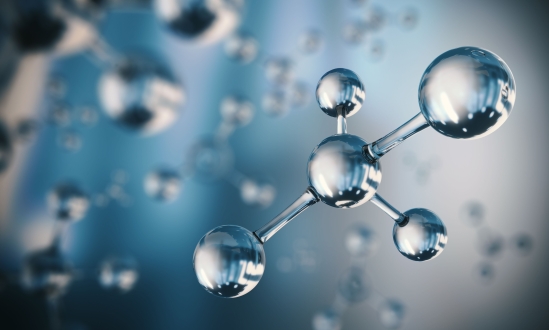

Step into the world of chromatography systems, where innovation and precision intersect. These analytical instruments are fundamental for separating complex mixtures, making them indispensable in fields such as pharmaceuticals, environmental monitoring, and food sciences. With applications ranging from research to quality assurance, chromatography systems deliver reliability and precision, ensuring that every chemical analysis is both detailed and dependable.
Step into the world of chromatography systems, where innovation and precision intersect. These analytical instruments are fundamental for separating complex mixtures, making them indispensable in fields such as pharmaceuticals, environmental monitoring, and food sciences. With applications ranging from research to quality assurance, chromatography systems deliver reliability and precision, ensuring that every chemical analysis is both detailed and dependable.

Chromatography is an analytical approach used to separate mixture components based on their distinct chemical or physical interactions. The technique depends on the distribution of analytes between two phases: a stationary phase and a moving phase. As the sample mixture travels through the medium in liquid or gas form, its interaction with the stationary phase determines the speed of migration, leading to separation. The guiding principle is differential affinity—compounds that bind strongly to the stationary phase move slowly, whereas those with weaker interactions elute more quickly.
Modern chromatography systems are composed of several critical parts. The injection system introduces the sample into the mobile phase with high accuracy, ensuring a narrow band of analyte for optimal resolution. The heart of the system is the column, which contains the stationary phase and enables separation; columns may be packed or capillary, depending on the application. Detectors then identify the compounds as they elute, translating chemical signals into measurable outputs. Finally, advanced software converts these signals into chromatograms, where distinct peaks correspond to individual components. A well-regulated mobile phase, carefully selected stationary medium, and sensitive detection system collectively guarantee reliable and repeatable separations.
Several chromatographic approaches are available, each adapted to specific analytical challenges:
Gas Chromatography (GC): Designed for volatile and gaseous compounds, GC employs an inert gas as the mobile phase. The stationary phase within the column interacts with molecules based on polarity or other chemical features. Sensitive detectors allow accurate measurement and quantification of trace compounds.
Liquid Chromatography (LC): Suitable for non-volatile or thermally unstable analytes. High-Performance Liquid Chromatography (HPLC) utilizes pressurized pumps to force the mobile phase through tightly packed columns, achieving precise separations. Variants like Ultra Performance Liquid Chromatography (UPLC) further enhance speed and resolution using smaller stationary phase particles and higher pressures.
Ion Chromatography (IC): Specialized for separating ionic species through charge-based interactions. It is widely employed for measuring cations and anions in water, proving essential for environmental analysis and industrial monitoring.
Size Exclusion Chromatography (SEC): Separates molecules according to size. Larger molecules elute first since they bypass the porous stationary matrix, while smaller molecules interact more and elute later. This technique is vital in polymer research and protein characterization.
Specialized Techniques: Methods like affinity chromatography exploit molecular recognition, such as antibody-antigen binding, while chiral chromatography resolves enantiomers by using a stationary phase with chiral properties.
Chromatography is indispensable across diverse scientific and industrial sectors. In environmental science, it enables detection of pollutants, water contaminants, and industrial emissions. In food and beverage testing, it ensures authenticity, safety, and compliance by identifying additives and contaminants. The pharmaceutical industry relies on chromatography for both quality control and impurity profiling of active compounds. Forensic laboratories use these systems to examine trace evidence, helping establish links between materials and criminal events.
Reliability and sensitivity are paramount in these fields. Advanced systems feature automation, robust detectors, and sophisticated data-processing tools that ensure reproducibility and shorten analysis time. Continuous improvements in design have enhanced both speed and accuracy, reinforcing chromatography’s role as a cornerstone of analytical science.
The evolution of chromatography is being shaped by automation, digital integration, and sustainability. Automated processes—from sample preparation to data interpretation—reduce human error and increase throughput. Software innovations now enable advanced functions such as peak deconvolution and multi-dimensional data analysis.
Miniaturization and microfluidic innovations are reducing sample and solvent requirements while improving detection sensitivity. The integration of chromatography with mass spectrometry has expanded its analytical power, providing detailed molecular identification alongside separation.
Sustainability has also become a key focus, with greener methods designed to minimize solvent use and energy consumption. High-throughput screening and multiplexed systems are accelerating workflows, allowing laboratories to process larger sample volumes more efficiently. Looking forward, user-friendly interfaces, cloud-based data storage, and remote operation are expected to make sophisticated systems more widely accessible.
Quality assurance in chromatography relies on stringent method validation and system calibration. Validation examines accuracy, precision, sensitivity, and linearity to confirm the method’s reliability under varying conditions. Regulatory compliance and adherence to international standards are vital, particularly in industries such as pharmaceuticals, food safety, and environmental monitoring. Routine calibration and maintenance sustain instrument performance, ensuring consistent and trustworthy results.
Chromatography systems stand as a foundation of analytical chemistry, offering versatility and accuracy in separating complex mixtures. Through ongoing innovation in design, automation, and data analysis, they continue to meet the demands of modern science and industry. With advancements aimed at sustainability, precision, and accessibility, chromatography will remain an essential tool for both present and future generations of scientists.